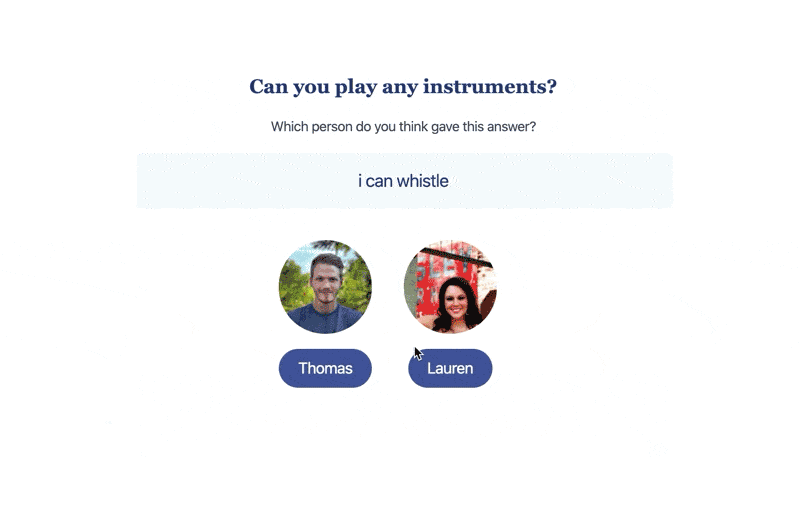Whether you're a new hire or a team leader leading a new group, it's easy to feel out of place. In these scenarios, what you need are activities that can develop closer bonds between employees and serve as icebreakers. Enter "Get to Know Your Games" a set of fun activities that can help you build deeper relationships with a new group.
Working in an office might occasionally seem intimidating, especially if you're new or if your coworkers are introverted. But, getting to know your coworkers and developing good connections with them may significantly improve your working environment.
**Key Takeaways (TL;DR)
- Get to know you games are activies you can run with your teams to get to know each other more. They're great if you have new team members or if you're assembling an ad-hoc team to work together.
- It's great to get personal at work. It builds vulnerability, trust, and empathy. That's why games like get to know you games come in very handy.
- We share over 15 options for get to know you games to play at work. See which one you like best and share with the team.
We enjoy doing things at work in a fun way. That’s why we’ve put together a set of simple yet engaging ways to get to know each other better in a team setting. These include our favorite icebreaker games, some team-building exercises, and simple activities that you can run with your coworkers.
| Get to Know You Game | Objective | Number of Players | Playing Time |
|---|---|---|---|
| 1. Run Icebreaker Games with QuizBreaker | Help teams get to know each other through quizzes | 5 - 100 players | 5 - 15 minutes |
| 2. Personality Tests for Teams | Understand team members' personalities | 5 - 50 players | 5 - 30 minutes |
| 3. Two Truths and One Lie | Learn interesting facts about coworkers | 5 - 50 players | 15 minutes |
| 4. This or That | Learn fun facts about coworkers | 5 - 25 players | 5 - 10 minutes |
| 5. Top Five | Share personal preferences | 5 - 50 players | Varies |
| 6. Meet Me Bingo | Find commonalities among team members | 5 - 50 players | Varies |
| 7. Spill It or Eat It | Answer personal questions or eat mystery food | 5 - 20 players | 15 minutes |
| 8. Never Have I Ever | Learn about coworkers' experiences | 10 - 15 players | Varies |
| 9. Penny For Your Thoughts | Encourage open dialogue and sharing | 5 - 10 players | 20 - 30 minutes |
| 10. Shoe Talk | Answer questions from a shoe | 15 - 30 players | 30 minutes |
These games are great for small groups and large groups alike. They’re also easy enough to do during breaks, team-building activities, or even before your start face-to-face or online team meetings.
So let’s get started. See why you should do get to know you games at work and up to 15 fun options for these games in the workplace that can help with team bonding, water cooler conversations, and more!
What are Get to Know You Games?
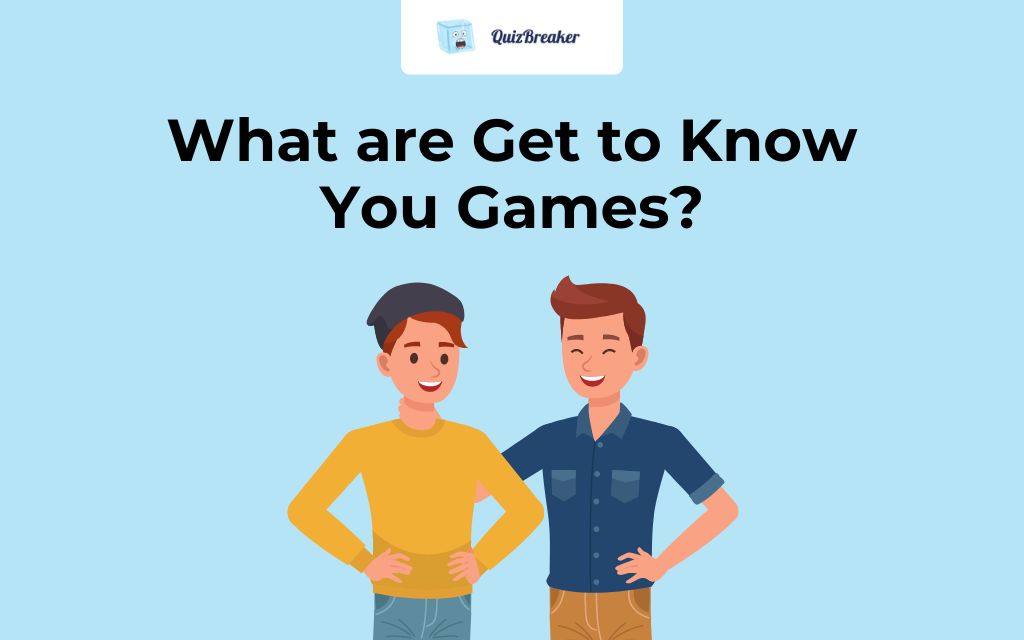
"Get to Know You" games are activities you can run with a group or team to get to know each other better. They’re meant to foster greater interpersonal understanding while learning things about one another, like your favorite things, childhood experiences, dreams, aspirations, and more.
Teams use these activities to help group members bond over simple games and exercises. They’re great for welcoming a new hire into a company, or get a new group at work to create a sense of familiarity, safety, and collaboration.
With a fun game, you can get small teams to interact at a personal level and break down barriers or get teams loose before a training session.
These activities might be a good approach to lowering barriers and fostering trust among employees. These frequently include tasks or inquiries that nudge participants to divulge private details about themselves, such as their passions, pastimes, or life experiences.
"Get to Know You" games are designed to bring people together, learn more about one another, and foster closer connections.
People are more willing to collaborate and assist one another when they feel more connected to their coworkers, which can enhance output, job satisfaction, and general well-being.
Benefits of Get to Know You Games at Work
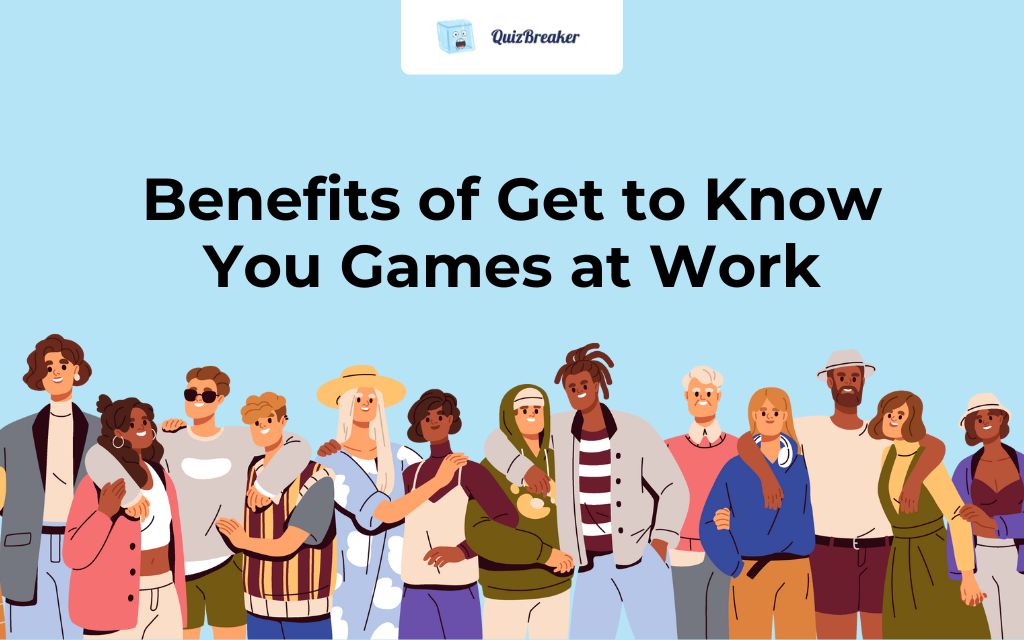
Get to know you games aren't special activities that require complex business systems to run. They take 5 to 10 minutes to run and can be facilitated by anyone. But that doesn't mean they don't hold any weight.
In fact, as simple as these activities can be, they provide a whole array of benefits for your teams. Here are just some of the many benefits get to know you games can bring to teams.
1) Builds team bonding and relationships
Playing get to know you games can help build trust and promote healthy relationships in the workplace.
Patrick Lencioni of the Table Group, when speaking on how to build vulnerability-based trust, often shares how getting to know one another outside of the confines of work can help people feel more safe with their peers. Get to know you games are a great way to do that.
2) Improves communication and trust
When your team gets to know each other more, they learn to communicate more effectively. Being familiar with each other helps make it easier to communicate with little misunderstanding and helps avoid saying things in a way that might hurt or offend others.
3) Breaks the ice with new team members
Get to know you games can be particularly useful for new team members who may feel uncomfortable or isolated in a new work environment. These activities can help break the ice and make it easier for new employees to integrate into the team.
4) Allows people to learn about common interests
Get to know you games can help people discover common interests in and outside of work. This can help build stronger relationships among team members, as they have more to talk about beyond work-related topics.
5) Boosts morale and fun at work
Icebreaker activities and get to know you games tend to create a positive work environment by boosting morale and increasing workplace engagement. When employees are having fun and enjoying their work, they are more likely to be productive and happy with their jobs.
6) Identifies hidden talents and strengths of individuals
Get to know you games could potentially reveal hidden talents and strengths of individuals that you didn't know before. These skills could help in the workplace or even simply be an avenue for your colleagues to build confidence as you affirm them of their giftedness.
7) Makes onboarding and training more engaging and effective
Get to know you games can make onboarding and training more engaging and effective by helping new employees feel more comfortable and connected with their team. This can lead to faster and more effective integration into the workplace.
8) Fosters creativity through unstructured interactions
Get to know you games that involve unstructured interactions can help foster creativity and innovation by encouraging employees to think outside the box and explore new ideas.
9) Strengthens company culture
Finally, get to know you games can help strengthen company culture by promoting shared values and a sense of community among employees. When employees feel connected to their company's culture and mission, they are more likely to be engaged and committed to their work.
Get to Know You Games to Try Out
1. Run Icebreaker Games with QuizBreaker
Objective: Help teams get to know each other through quizzes
Number of Players: 5 - 100 players
Playing Time: 5 - 15 minutes
Materials Needed: QuizBreaker software
Of course, we’re going to include our pride and jewel- QuizBreaker! This is a great icebreaker tool that you can use in the office to help teams get to know each other a little bit more despite the hustle and bustle of the day to day.
Using QuizBreaker is easy. Invite your team members to answer a series of icebreaker questions. The software then schedules out asynchronous quizzes on your chosen schedule. Get your team to answer these questions and discover new things about each other.
As simple as the concept is, it’s helped thousands of teams build deeper relationships and get to know each other better. This, in turn, has helped them foster team camaraderie, trust, and collaboration. Schools also often use these kinds of games to help new kids and students feel more comfortable in the classroom.
A terrific choice for remote teams or virtual events, you can use QuizBreaker both in-person and online. The tool is simple to set up and may be modified to meet the requirements and preferences of the group.
Even if they are in various time zones or places for work, you can connect with coworkers and forge closer relationships with QuizBreaker.
QuizBreaker also has all kinds of other features to engage your teams, including:
-
Workstyle profiles detailing work habits to better grasp your team members' working preferences;
-
A group multiplayer trivia game for enjoyable breaks during work hours;
-
A pulse survey to assess your team's involvement and commitment;
-
A comprehensive tool that displays your employees' scores on personality evaluations such as DISC, Jungian, and Big5; and
-
Digital escape room challenges to foster strategic thinking and teamwork.
Click here to test out QuizBreaker today.
2. Personality Tests for Teams
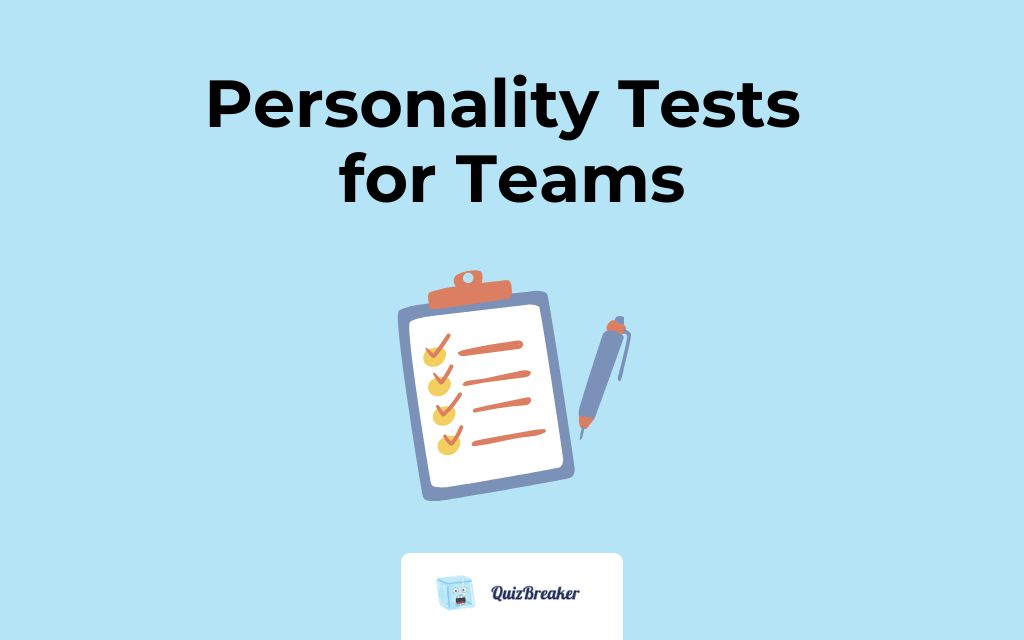
Objective: Understand team members' personalities
Number of Players: 5 - 50 players
Playing Time: 5 - 30 minutes
Materials Needed: Personality test tools (e.g., Myers Briggs, DiSC)
If you're working with a new team or onboarding new coworkers, it helps to know their personalities. One of the most structured ways teams do this for new recruits, teams, departments, and even companies as a whole is through a personality test or two.
Personality tests are assessments that anyone can take together to understand how each one works and operates. There are many tests and assessments to choose from. Some of our most favorite include:
-
Big 5 Personality Test
-
DiSC
-
Myers Briggs
-
Strengthsfinder
-
Working Genius
-
Achievement Orientation
-
The Four Tendencies
-
Occupational Emotional Intelligence
-
Self Efficacy
-
Empowering Leadership
-
Project Management
Personality tests are also one of the best icebreakers to run in your team because it shows you how a person might operate at work. For instance, if you use the Myers Briggs assessment in your office and you discover that a new hire is an INFP, you'll know that person has a "Feeling" tendency. That means he or she will tend to be more empathetic toward others.
One fun way to gamify a personality test, you can have team members write down their profiles on index cards and put them in a pile. You then proceed to have members pick a card one at a time and try to guess who that co-worker might be.
For personality assessment profiles, we highly recommend using a tool like Workstyle.io to determine your team members' individual personality assessments. This tool has over eight assessments that your team can try out, making it a more encompassing profiler.

It's important to note that personality tests are not meant to discriminate or limit a person. These results are simply a part of who they are and are not in any way meant to limit their identity to just a set of results.
3. Two Truths and One Lie
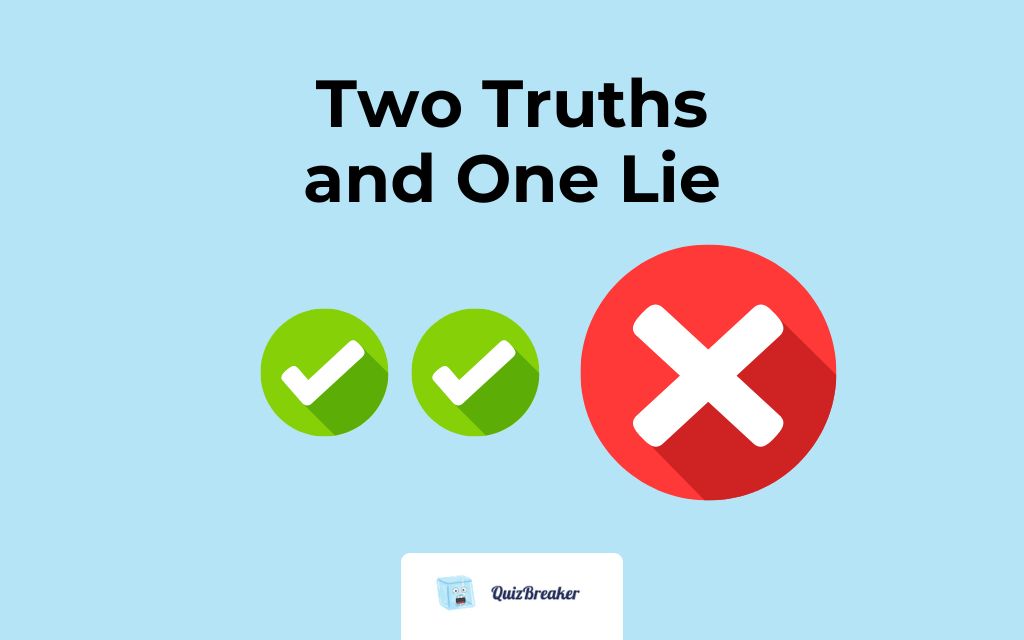
Objective: Learn interesting facts about coworkers
Number of Players: 5 - 50 players
Playing Time: 15 minutes
Materials Needed: None
The game "Two Truths and One Lie" is a well-known icebreaker that asks players to tell intriguing facts about themselves while simultaneously seeing how well the group can spot the deception.
Each participant offers three self-descriptive claims, two of which are accurate and one of which is untrue. The group then attempts to identify which assertion is false. Colleagues can have fun playing this game to get to know one another's histories and hobbies. It can be played anywhere.
"Two Truths and One Lie" is a classic icebreaker game, but it's one any team can do in 15 minutes or less. You have the option to run this with three to four members before town halls, meetings, or stand-ups to break the ice.
If you have new team members, you can ask them to go first so that everyone gets the chance to know them better right away.
4. This or That
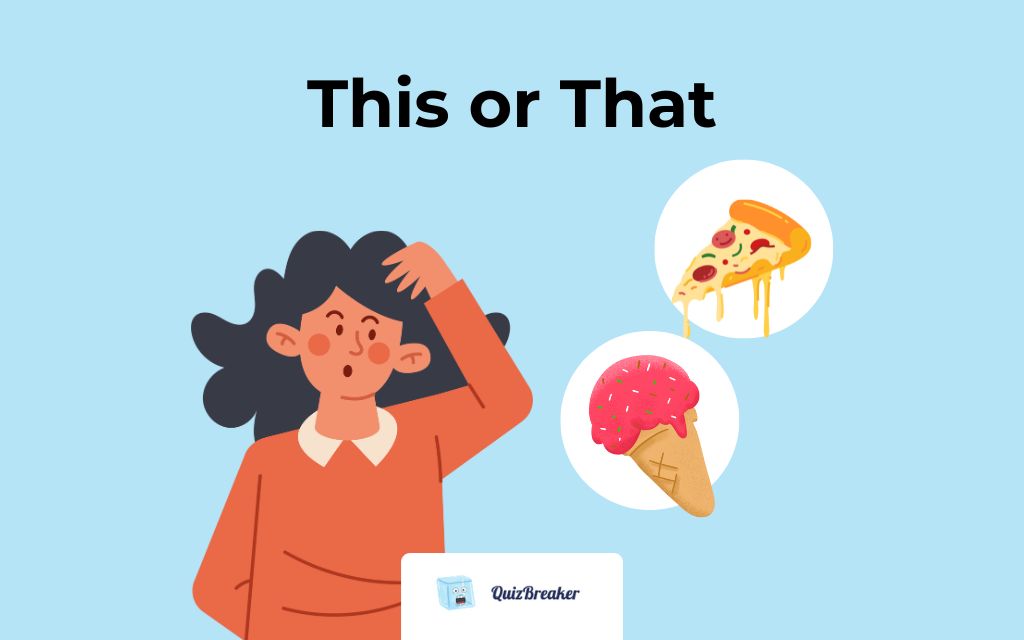
Objective: Learn fun facts about coworkers
Number of Players: 5 - 25 players
Playing Time: 5-10 minutes
Materials Needed: None
"This or That" is the perfect icebreaker to learn fun facts about their coworkers, like their favorite food, band, productivity tool, and so on. This icebreaker activity requires players to select one of two possibilities. A choice must be made from one of two possibilities presented by one individual. Food, music, movies, and activities are just a few examples of the options available.
You can play this game with as few as two or three players. If you’re in a big meeting, you could do a fast-track round or simply choose a few people to share before you start with your agenda. Alternatively, you can also send two to three participants into breakout rooms for 5 minutes so everyone gets a chance to participate.
You can play this game in person or electronically through text or video chat, "This or That" is frequently used as an icebreaker or a lighthearted way to pass the time.
5. Top Five

Objective: Share personal preferences
Number of Players: 5 - 50 players
Playing Time: Varies
Materials Needed: None
If you want to maximize the time and get people to share more intimate details about their personal lives in one go, Top Five is a great choice for a get to know you game.
Each player takes turns giving their top five selections for that category, in no particular sequence, once the first player chooses a category, such as "Top Five favorite movies."
The other participants can then proceed to bond with people who might share the same choices as they do. You’ll be surprised how much overlap there can be in the office!
Any number of participants can participate in the game, and the categories can be altered to reflect the group's preferences. The game's objective is to join in the fun conversation and communicate personal preferences.8
6. Meet Me Bingo
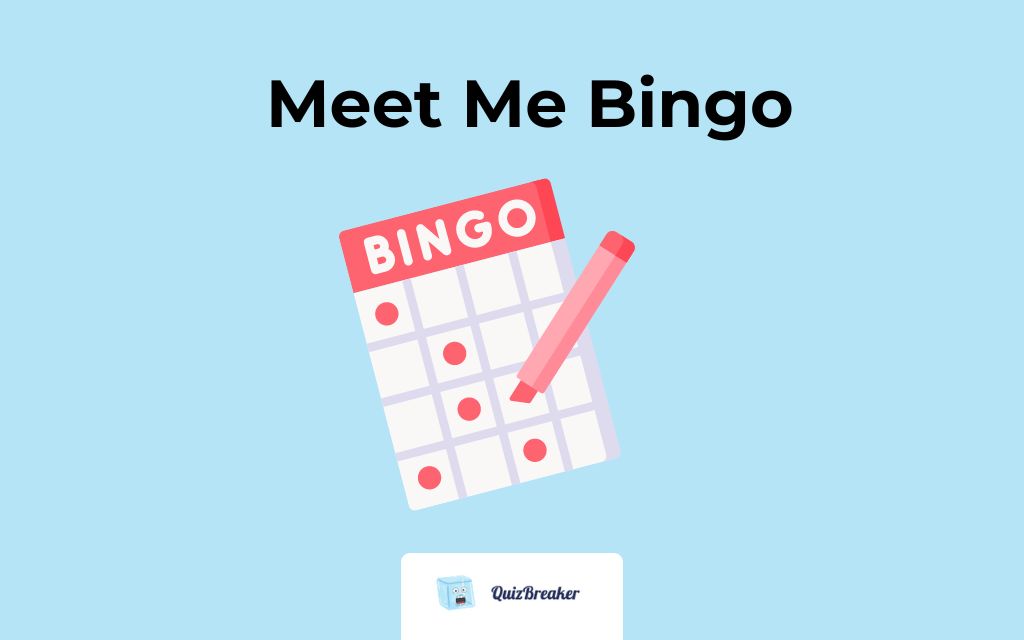
Objective: Find commonalities among team members
Number of Players: 5 - 50 players
Playing Time: Varies
Materials Needed: Bingo cards
"Meet Me Bingo" requires participants to look for other players who meet specific requirements on a bingo card. To begin the game, you'll need a human bingo card, which has sets of characteristics or experiences your team members might have. Some might include:
-
Has traveled to Europe;
-
Loves chocolate;
-
Is the eldest among siblings;
-
Has a dog;
-
Loves to read;
-
Owns a Netflix account;
-
Has gotten on a roller coaster;
-
Loves the outdoors;
-
Plays a sport;
-
and so on.
Each player then interacts with others, looking for someone who meets each description on their bingo card, which features a grid of squares with precise characteristics.
They can check off the square on their bingo card that corresponds to a match by doing so. Unless someone completes a full row or column of squares, the game is still going. The objective of the game is to promote player interaction by identifying common experiences or interests.
If you don't want to create Meet Me bingo cards yourself, there are many tools online to help you develop the content for these cards. One we recommend using is Bingo Baker, which can generate bingo cards in various permutations so you can run a few rounds over the course of the year if you want to.
7. Spill It or Eat It
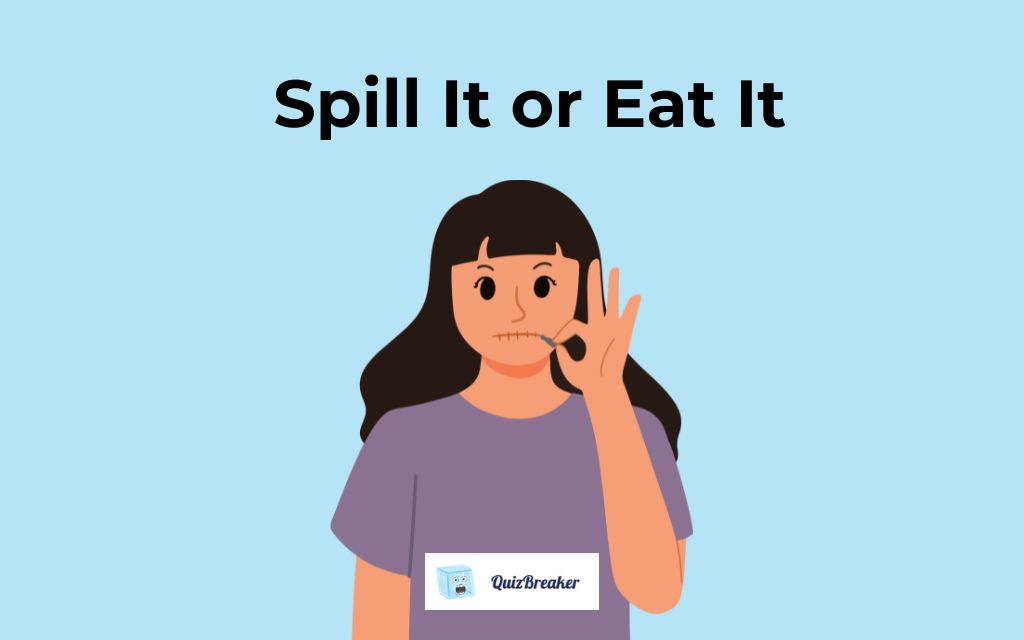
Objective: Answer personal questions or eat mystery food
Number of Players: 5 - 20 players
Playing Time: 15 minutes
Materials Needed: Mystery food items, question categories
Players in "Spill It or Eat It" take turns spinning a wheel with many categories on it. The player who spun the wheel must either respond to a personal question about that category or consume a mystery food item that is also connected to that category when the wheel falls on it.
The game continues until each player has taken a turn. The other players can select the get to know you questions or the mystery food options. The objective with this team icebreaker is to get players to provide personal information while simultaneously introducing a sense of surprise and danger via the mystery food items.
8. Never Have I Ever
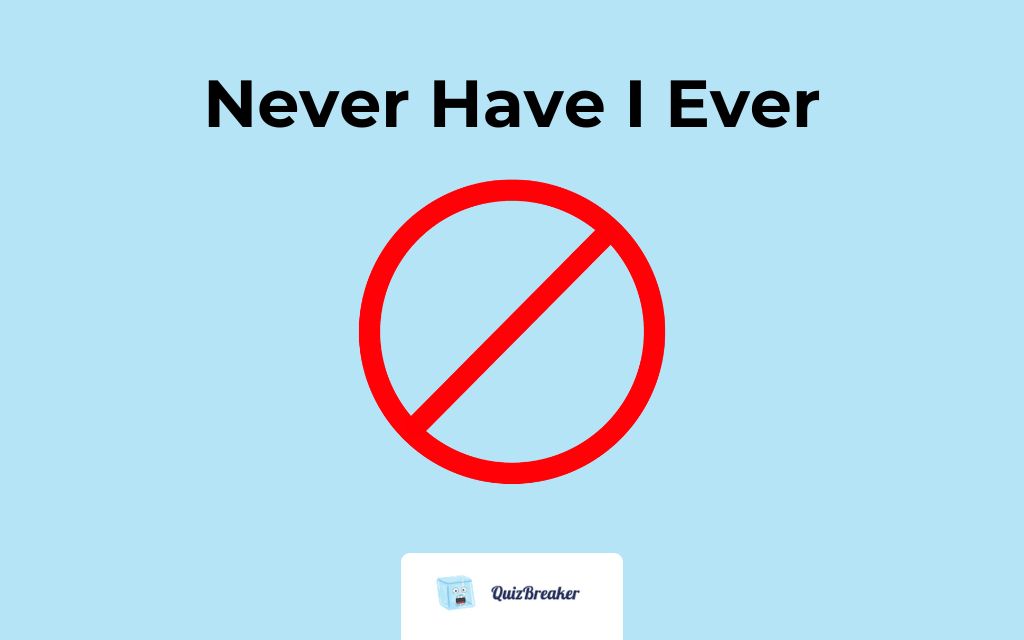
Objective: Learn about coworkers' experiences
Number of Players: 10 - 15 players
Playing Time: Varies
Materials Needed: None
In this game, players can take turns beginning their statements with "Never have I ever," followed by something they have never done, in the game "Never Have I Ever." Every player who has done the action, such as "Never have I ever gone bungee jumping," must immediately take a drink or put down a finger.
The participants take turns making remarks while the game progresses, and those who have already engaged in the aforementioned actions are required to keep drinking or put down their fingers.
The objective of the game is to learn more about each other's experiences while having fun, and it may go on as long as the participants like.
9. Penny For Your Thoughts
Objective: Encourage open dialogue and sharing
Number of Players: 5 - 10 players
Playing Time: 20 - 30 minutes
Materials Needed: Pennies, container

In "Penny For Your Thoughts," participants take turns expressing their opinions or sentiments on various subjects or get to know you questions. A player will begin by posing a query or introducing a subject for debate.
Following that, each player gets the chance to express their opinions on the subject, and the other players can listen and provide encouragement or feedback. Players can also decide to drop a penny in a designated container each time they talk, indicating their readiness to share their opinions to promote honest and open dialogue.
The game's objective is to encourage users to have deep dialogues and bonds with one another.
10. Shoe Talk
Objective: Answer questions from a shoe
Number of Players: 15 - 30 players
Playing Time: 30 minutes
Materials Needed: Paper slips, shoe
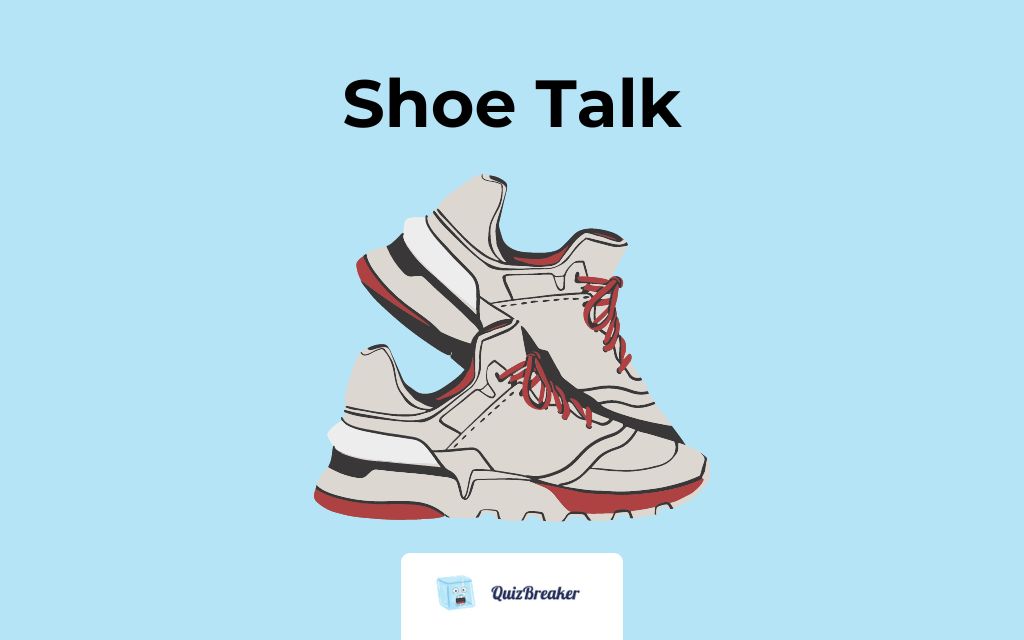
Players write a question or topic on a piece of paper, place it inside a shoe, and play a game called "Shoe Talk." After then, each player takes a slip of paper from the shoe and responds to the question or brings up the subject.
Players can opt to keep the answers and conversations private to promote frank and open dialogue. The participants can play as long as they like, adding fresh slips of paper to the shoe as necessary. The game's objective is to encourage users to have deep dialogues and bonds with one another.
11. A Storybook about Me
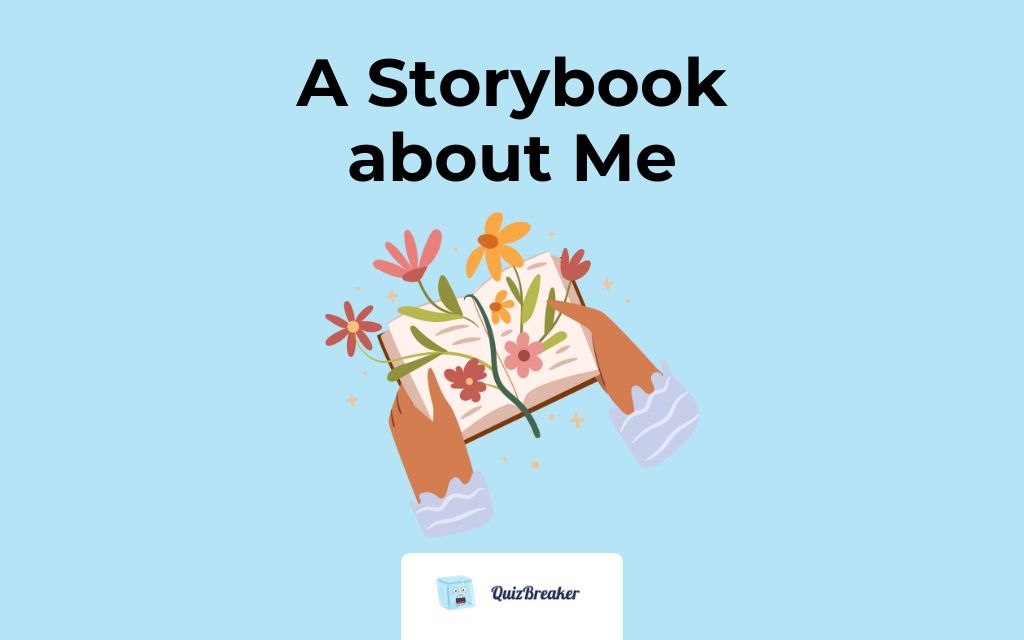
Objective: Share personal stories
Number of Players: 5 - 50 players
Playing Time: 45 - 60 minutes
Materials Needed: None
Players of "A Storybook about Me" write a brief autobiography or description of themselves using the game's prompts or themes. Each participant takes turns telling their narrative with the other players, who can listen and provide encouragement or comments.
The prompts could include subjects like "my childhood," "interesting facts about me," or "my dreams for the future." The participants can play the game as long as they like, adding additional prompts or categories as necessary. The game's objective is to motivate participants to learn more about one another and themselves via exciting and engaging interactions.
Optionally, you can reward the person with the best story to gamify the game. Have a set of people choose their top picks based on criteria like storytelling, creativity, audience impact, and so on. Alternatively, you can have all the participants vote on which story they liked best.
12. Time Bomb Introductions
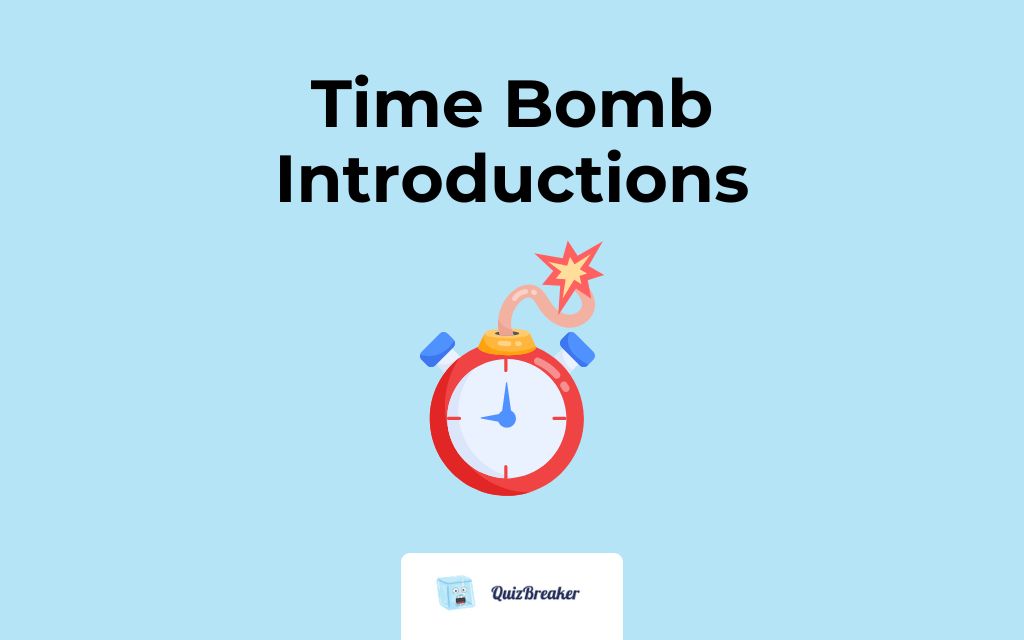
Objective: Introduce yourself quickly
Number of Players: 3 - 100 players
Playing Time: Varies depending on number of participants
Materials Needed: Timer
Players take turns presenting themselves to the group in "Time Bomb Introductions," but there's a catch: they have to finish their introduction before the timer or another player sets the time limit, which may be anything from a few seconds to a minute or more.
The other players may "explode" or make a loud noise to indicate the end of the turn if the player does not complete their introduction within the allotted time.
Each participant can take a turn as the game progresses, and the time restriction can be changed as necessary. The objective of the game is to inspire players to introduce themselves succinctly and creatively while adding
13. Word Association
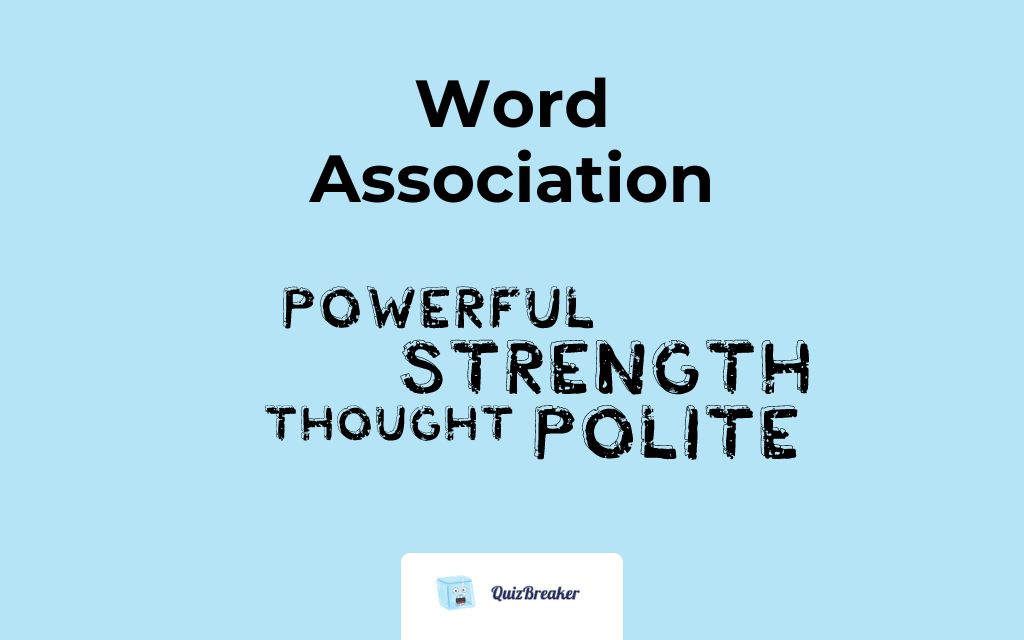
Objective: Rapidly connect words
Number of Players: 5 - 50 players
Playing Time: 10 - 15 minutes
Materials Needed: None
In "Word Association," participants take turns pronouncing a word that is connected to the word that was spoken by the person before them. The game can continue with each player having a turn, and the words can be connected to any category or topic, such as food, animals, or movies. For instance, if the first player says "Apple," the second player might say "tree," and the third player could say "leaf."
A player may be removed from the game if they are unable to come up with a related term, or the other players may make ideas to keep the game running. The game's objective is to promote rapid thinking and quick reflexes while fostering entertaining interactions between players.
14. Trading Card Icebreaker
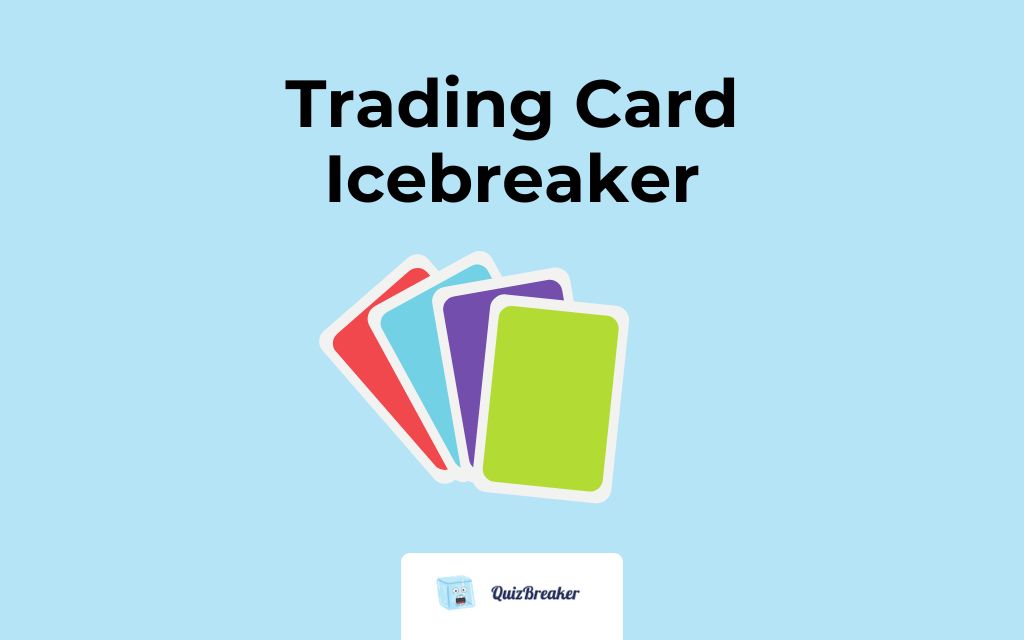
Objective: Create and share personal trading information via trading cards
Number of Players: 5 - 20 players
Playing Time: Varies
Materials Needed: Trading card templates
Players build a unique "trading card" containing information about themselves, such as their name, interests, and other amusing tidbits, as part of the game's rules for "Trade Card Icebreaker." In each turn, players display their trade cards to the group, relating facts on the card to themselves and telling tales.
The other participants can listen, provide encouragement or feedback, as well as ask questions or share their own experiences. With new players making their trade cards as they join the game, the game may go on for as long as the participants choose.
The game aims to motivate participants to learn more about one other and themselves via fun and exciting sharing. If you need a Trading Card Icebreaker template, you can use this one from Education World.
15. Find Your Pair

Objective: Find coworkers with a common trait
Number of Players: 5 - 10 players
Playing Time: 3 - 15 minutes
Materials Needed: None
In "Find your partner," players are paired with another member of the group based on a common trait or interest. Players travel about the room to identify a person who shares that attribute once a chosen player calls out a category, such as "favorite color," "favorite place to get a drink," or "favorite movie."
The players might identify themselves and talk more about their shared quality or interest after the pairings have been created. Depending on the choices of the group, the game can continue with new categories or hobbies, and participants can switch partners or stay with the same one.
The game's objective is to inspire players to interact with one another and uncover points of mutual interest.
Frequently Asked Questions
What are some scenarios where you can play get to know you games at work?
Get to know you games can be used in all kinds of scenarios, events, and activities in the office. Here are some of the most common times and places you can play icebreakers and get to know you activities.
Team building activities or retreats
If you're out with your team on a retreat or off-site team building day, take some time to play a get to know you game. These games are great even if your team has known each other for a long time. There's always something new to discover about your colleagues.
The beauty of get to know you games is that you don't need anything special to get started. You can just gather up in a huddle or head over to the cabin and start.
If ever you're looking for other retreat ideas, you should check out this other list of retreat ideas we did in the past.
Lunch hours or breaks
Do you have a few minutes during the lunch break or coffee breaks, you can play a quick get to know you game with your coworkers or teams. It's a great way to break the ice and start a conversation that will help you get to know other people in your group.
Employee onboarding programs
Who ever said that employee programs have to be boring? On average, an onboarding experience consists of 54 activities. 41 of those will be administrative in nature, which can create a sense of monotony in the process.
Why not make employee onboarding a little more fun by adding a get to know you game? That way, you also get to learn a little bit more about your new team members.
Before company-wide town halls
Many times, it's a good idea to break the ice in a town hall to set the tone for the meeting. Why not play a quick get to know you game before you get started? It gets everyone involved and engaged before you move into business-related matters.
Before a staff meeting
Staff meetings are crucial for operational efficiency. But the regimen can also get a bit monotonous at times. Break the monotony by introducing a get to know you game once a month or so.
If you did all fifteen of the games we shared above, you should have enough games to cover more than one year if you were to do an icebreaker once a month in your staff meetings.
Make sure to keep track of time as you also don't want to sacrifice promptness and good time management for the sake of fun. Try to limit your get to know you games to five to ten minutes, probably fifteen maximum. Thankfully, many of the games we shared only take a few minutes to do in one go.
How do you make team introductions fun?
Try adding get to know you games or activities that enable team members to offer fascinating facts or personal anecdotes during team introductions.
You may also foster a calm and friendly atmosphere by offering refreshments or snacks and enticing everyone to interact and get to know one another.
Can our team play get to know you games online?
Yes, you can get to know you games online. Many virtual team-building platforms offer a variety of games and activities that can be played online with remote team members.
There are many fun icebreaker games you can do over Zoom, Google Hangouts, or Microsoft Teams, like a virtual scavenger hunt, human bingo, or trivia game. These simple online parlor games can encourage team members to bond over digital platforms and help break the monotony of work-from-home environments or even hybrid work schedules.
Final Words
Having a good time while getting to know someone might help you establish trust and forge better relationships. These games can be played in many contexts, such as social gatherings, the office, and internet forums.
It's crucial to pick games that the group will like and that will make everyone feel at ease and involved. You may contribute to the creation of a joyful and good environment and the development of long-lasting connections by including these games in your interactions.
To improve your social and professional encounters, play these games whether you're meeting new people or reuniting with old acquaintances.


